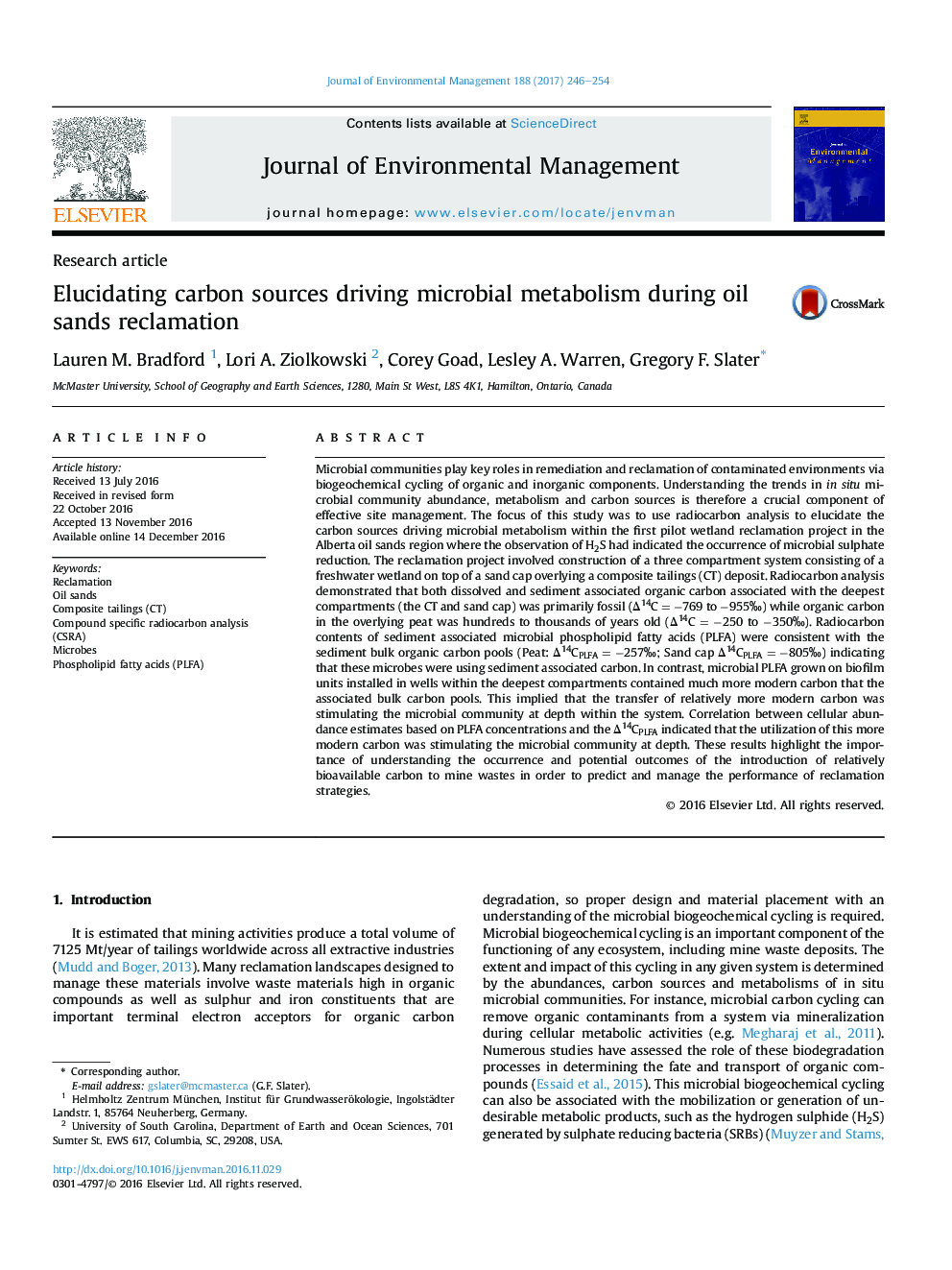| کد مقاله | کد نشریه | سال انتشار | مقاله انگلیسی | نسخه تمام متن |
|---|---|---|---|---|
| 5117142 | 1485227 | 2017 | 9 صفحه PDF | دانلود رایگان |
- Biogeochemical cycling during reclamation driven by organic carbon availability.
- Bacterial biomass was positively correlated with age of carbon utilized.
- Petroleum carbon usage is associated with low bacterial biomass.
- Wetland peat carbon is associated with high bacterial biomass.
- Inputs of young carbon stimulate bacteria in previously low biomass compartments.
Microbial communities play key roles in remediation and reclamation of contaminated environments via biogeochemical cycling of organic and inorganic components. Understanding the trends in in situ microbial community abundance, metabolism and carbon sources is therefore a crucial component of effective site management. The focus of this study was to use radiocarbon analysis to elucidate the carbon sources driving microbial metabolism within the first pilot wetland reclamation project in the Alberta oil sands region where the observation of H2S had indicated the occurrence of microbial sulphate reduction. The reclamation project involved construction of a three compartment system consisting of a freshwater wetland on top of a sand cap overlying a composite tailings (CT) deposit. Radiocarbon analysis demonstrated that both dissolved and sediment associated organic carbon associated with the deepest compartments (the CT and sand cap) was primarily fossil (Î14C = â769 to â955â°) while organic carbon in the overlying peat was hundreds to thousands of years old (Î14C = â250 to â350â°). Radiocarbon contents of sediment associated microbial phospholipid fatty acids (PLFA) were consistent with the sediment bulk organic carbon pools (Peat: Î14CPLFA = â257â°; Sand cap Î14CPLFA = â805â°) indicating that these microbes were using sediment associated carbon. In contrast, microbial PLFA grown on biofilm units installed in wells within the deepest compartments contained much more modern carbon that the associated bulk carbon pools. This implied that the transfer of relatively more modern carbon was stimulating the microbial community at depth within the system. Correlation between cellular abundance estimates based on PLFA concentrations and the Î14CPLFA indicated that the utilization of this more modern carbon was stimulating the microbial community at depth. These results highlight the importance of understanding the occurrence and potential outcomes of the introduction of relatively bioavailable carbon to mine wastes in order to predict and manage the performance of reclamation strategies.
Journal: Journal of Environmental Management - Volume 188, 1 March 2017, Pages 246-254
